The get home bag is often overlooked, but it’s the survival bag that you’re most likely to use. Ideally, we would get some kind of warning about a coming disaster, or we’d be able to drive home before things got too bad. Unfortunately, this isn’t always going to be the case.
What could be worse than being stuck far away from home when a disaster strikes? This is where a well thought out get home bag comes into play.
A get home bag is a bag with gear and equipment that is designed to get you from where ever you are back to where you live if a disaster occurs. Exactly what you have in your get home bag is going to depend on how far you think you’re going to have to travel to get home.
As we walk through the components and ideas behind the get home bag, keep your personal situation in mind. This is really important because it will let you tailor your bag to your specific needs so you can make it home as fast as possible after a disaster of any kind.
Keep in mind when you’re building your get home bag that it’s different than your bug out bag. If you’re looking to build a bug out bag, check out our bug out bag list to see our recommendations.
Why Would You Need a Get Home Bag?
Most of us spend a significant amount of time away from home every day. This means that if a disaster strikes, we’re almost as likely to be there as we are when we’re home.
Normally this time is spent at work or some other location that doesn’t change all that often. This is good because it gives us a set distance that we need to plan for.
If you spent a lot of time away from home but it isn’t at a set location (you do deliveries, drive a cab or do something else that keeps you moving around) plan for the furthest distance that you may need to travel. This may make your get home bag heavier than it needs to be, but you can always pull extra food and water out and leave it behind.
Better yet, give that food and water to someone that needs it before you head off for home.
Get Home Bag Basics
The basic get home bag is for those people that will need to travel for one day or less. This should cover the majority of readers. As we get to each item in the list we’ll discuss the pros and cons of various items and give recommendations for specific types of gear to include in your get home bag.
Before we get started adding items to our get home bag, we first need to figure out two things, how far can you walk in one day and how long will it take you to get home.
Most healthy adults can comfortably sustain a speed of 3-4 miles per hour walking. This is over a smooth surface where walking is easy. If you have to travel along trails or over broken ground this could be lowered quite a bit. If you’re forced to walk through heavy snow, this is going to be considerably slower. Other things that could slow you down are social unrest, police barricades, physical limitations or injuries and anything related to the disaster forcing you to walk home.
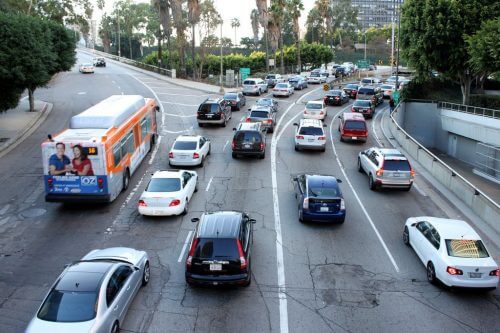
Remember that this speed is how fast you can move comfortably. In a disaster situation, your family needs you and you need to get home as fast as possible.
We’re worried about speed, not being comfortable. Because of this, we consider 25 miles a day to be the distance you should be able to travel. It’s not an easy goal and it’s going to be tough if you need to go that far for a couple of days in a row, but you CAN do it.
If you’re in good shape this may seem like nothing, if you spend most of your time at a desk or on the couch then 25 miles is going to seem like an impossible goal. For those of you that fall into either of these categories, adjust your get home bag accordingly.
Most American workers live within 25 miles of their job. That means most of us only need to plan for one day of travel with our get home bag. Because of this, we’re going to use one day as our base travel time for our get home bag.
After we have that built we’ll discuss options for those of you with longer commutes.

Your Everyday Carry
The items that you have on you every day should be factored into what you’ll pack into your get home bag. If you conceal carry a pistol then you probably don’t need another one in your get home bag, the same goes for your cell phone, a knife or whatever else you always have on you.
Get Home Bags
The bag that you choose should be able to blend in with the environment that you’ll be traveling through. For most people, it’s going to end up being something that doesn’t look overly tactical but provides a lot of the features we expect from a tactical backpack.
Your get home bag also needs to be big enough to carry the things you need but small enough to be light so you can move quickly without getting overly tired.
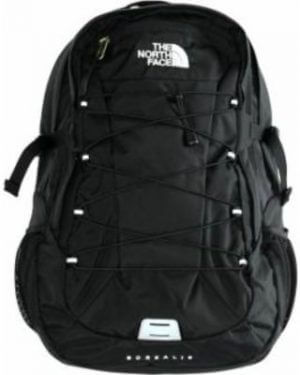
Backpacks like this North Face Unisex Classic Borealis Backpack fit the role perfectly. It has two pouches for water bottles on the outside, external elastic cords to attach last-minute gear or a pair of sneakers, and the inside is designed to secure items in place to keep them from shifting. On top of that, it wouldn’t cause anyone to give you a second look in the office or in more rural areas.
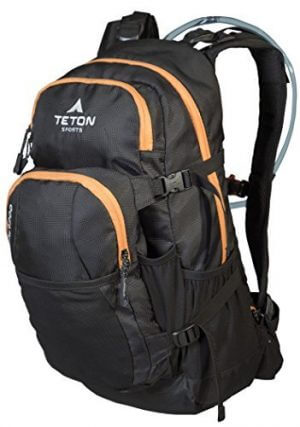
This TETON Sports Oasis 3-Liter Hydration Backpack is another good option. Three liters of water in a bladder against your back will feel a lot lighter than an equal amount of water in bottles on the bottom or sides of your pack. It’s a little on the large side so you need to remember to keep the weight down when you’re packing it.
Those packing for more than a day may find a get home bag of this size useful.
There are a number of tactical shoulder bags that would work well as a get home bag too. If you’re only looking at a couple of hours of travel to get home they’re definitely worth looking into.
Water
If I was going to take only one thing with me in my get home bag it would be water. A hydration pack, water bottles, or even just bottled water are all good options.
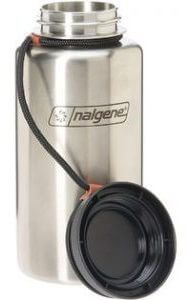
Consider taking at least one metal water bottle with you. This allows you to boil water if you need to and could also be used for cooking in a pinch. I prefer these 38 oz. Nalgene Stainless Bottles.
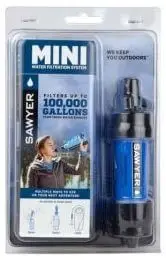
Having a water filter is a good idea. The Sawyer MINI and Lifestraw are both small, lightweight and work well. The one that you choose is really up to personal preference or what you have available.
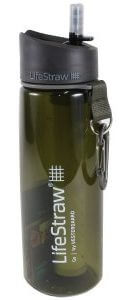
Another tempting option is to get an all in one water filter and water bottle like the LifeStraw Go Water Filter Bottle. This has the same water filtering capabilities as a regular LifeStraw.
Food
For one day of walking food is really a comfort item. You don’t need to pack food but it’ll make those long miles a little less miserable.
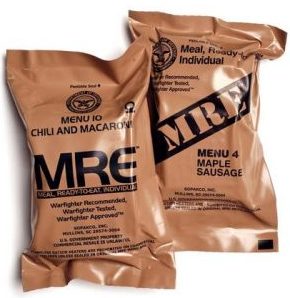
We recommend a single, stripped down MRE. Remove all of the extras, the heater, take the food out of the boxes, etc. and then close it up with a piece of tape. This cuts the space and weight down considerably.
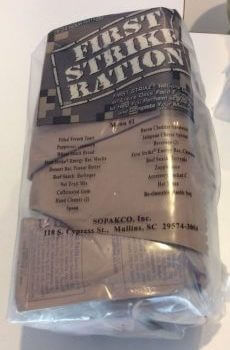
First strike rations would be great in a get home bag as they’re specifically designed to be eaten on the move during the first days of a conflict when the fighting is expected to be intense. Each one is made to last for 24 hours and takes up about as much space as normal MRE. They’re full of caffeine and various sugars as well to keep you going with little to no sleep. DO NOT BUY THEM ON AMAZON. They’re about 50% more expensive on Amazon then they are from other vendors.
Another option is 5 or 6 meal replacement bars. PowerBars, Clif bars or any of your favorite brands can go in here.
Footwear
Footwear is especially important when you’re planning on walking many miles over the course of at least a day. Make sure your get home bag has a comfortable pair of sneakers or boots on the outside so you’re guaranteed to have the correct type of footwear when you need it.
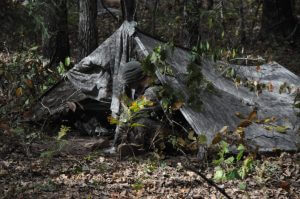
Shelter
Shelter in a get home bag is going to be very minimal. We’re primarily concerned with moving from where we are to our home as fast as possible. Stopping and setting up a shelter is kind of counterproductive when this is our goal, but it doesn’t mean that we may not need to make a shelter for one reason or another.
An emergency blanket or military poncho are good options for shelter. If you’re really looking to cut weight then the emergency blanket is the way to go. If you’re looking for something that can stand up to more abuse then add in a poncho.
First Aid Kit
Having a good first aid kit is always important. It doesn’t matter what kind of kit you’re building.
For normal cuts and scrapes, the Adventure Medical .5 First Aid Kit provides the base of our recommended first aid kit. It’s super lightweight and waterproof.
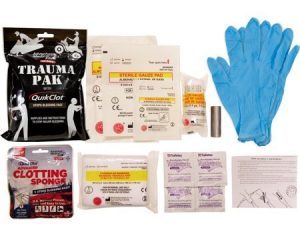
To stop severe bleeding, the Adventure Medical Trauma Pak has most of the items that you need. It’s missing a pressure dressing and a tourniquet but other than that it’s pretty a solid option.
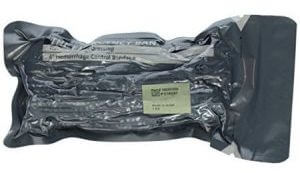
Adding an Israeli Bandage Battle Dressing fills one of the gaps that the trauma pak has. It’s a very good pressure dressing. Just make sure you understand how to use it.
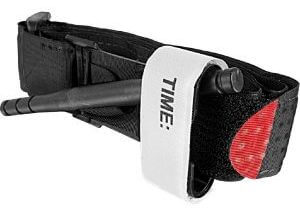
The Combat Application Tourniquet has been a standard for tourniquets in the past. Make sure you have at least one tourniquet in your get home bag.
We’ve recently been evaluating the SWAT-T Tourniquet and it’s been great as well. The only drawback of the SWAT-T is it is difficult to use on yourself if you need to.
DO NOT BE AFRAID TO USE TOURNIQUETS! Putting a tourniquet on someone doesn’t mean they’re going to lose a limb. They can be a lifesaver when you can’t rapidly stop bleeding.
Consider adding painkillers of some kind as you’ll likely be sore before you’re done with your journey home.

Hygiene
Hygiene items aren’t really overly important in a get home bag. Other than a small pack of baby wipes, I would consider some toilet paper but that’s about it. If you really wanted you could add a pack of single-use disposable toothbrushes, but it’s not really a priority.
Light
Light is a necessity anywhere you go. In a get home bag being able to continue to walk once it gets dark is a real advantage.
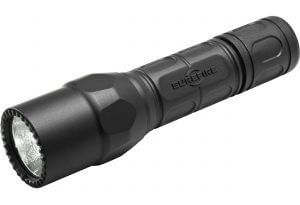
You can’t go wrong with something like the SureFire G2X Series LED Flashlight. These flashlights throw a strong beam of light that will make it possible for you to keep going as long as you need to.
A headlamp is something we always recommend. It allows you to keep your hands free while walking which is a benefit that is often under-appreciated until you’re in that situation.
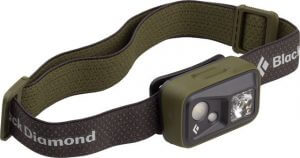
Right now the Black Diamond Spot Headlamp is our favorite headlamp.
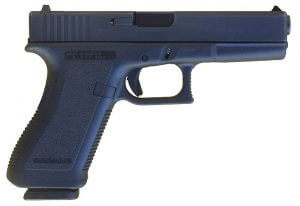
Weapons
We believe that a firearm should be a part of your EDC if at all possible. If you can’t carry a firearm because of the area that you live, then you’ll need another option. At a minimum, you should carry a large folding knife suitable for fighting.
In our bug out bag article, we recommend always having a rifle when you bug out. For a get home bag, we think a pistol is the right choice. Things likely haven’t deteriorated to a point where you would need a rifle at this point. However, social unrest is still a major concern as more and more people realize that some kind of disaster has occurred.
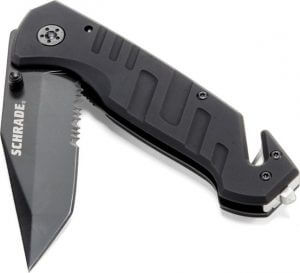
Knife
Whatever you carry on a daily basis will probably do fine. We’re not looking to do any kind of crazy bushcraft on our way home.
If you can’t have a pistol, then you may want to add a larger knife that would be suitable for self-defense.
Multi-tool
A simple Leatherman or Gerber multi-tool will do everything you need. If you feel like that may not be sufficient, then you should add a larger multitool to your get home bag.
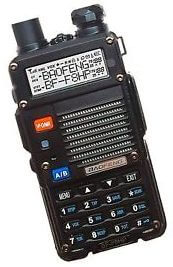
Communication
You don’t need to add anything special for communication. Just be aware that there may be cell phone outages or the system may become overwhelmed depending on the emergency.
You can add something like this BaoFeng BF-F8HP to your get home bag if you want to be able to have a secondary means of communication, but I wouldn’t recommend adding a radio.
Cordage
20-30 feet of paracord doesn’t take up a lot of room or add too much weight. What it does do is give you a ton of options for constructing shelters, attaching gear to your bag, and so on. It’s worth adding it to your get home bag.
Fire Starting
When we’re trying to get home, we want as little downtime as possible. That means you’re probably not going to be making a fire when you stop to rest unless you need to stay warm, but it doesn’t mean that we shouldn’t have a way to light a fire. One or two Bic lighters in your get home bag should be enough.
Binoculars
The idea of binoculars is something that many people don’t seem to understand. If you take the time to really think about it then it should make sense. Imagine that you’re walking down the road trying to get home and you spot a mob a few blocks away. What do you do? Keep walking toward them until you can see what they’re doing? Hide and try to sneak around them? If you have binoculars in your get home bag then you can get a better idea of what’s happening right from where you are.
Don’t underestimate the power of a hasty recon!
Look for a lightweight pair that isn’t overly expensive. You’re not looking for the clearest glass that’s ever been produced. You’re looking for something to use just in case you have to.
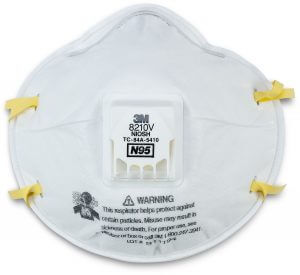
Dust Mask
An N95 approved dust mask should be included in your get home bag. Depending on the disaster, there could be smoke, dust, or other particulate matter floating in the air as you make your way home. A t-shirt or bandana isn’t good enough to keep those particulates out of your lungs.
Glasses/Goggles
A cheap pair of goggles or impact rated glasses make a good addition to a get home bag. Protecting your eyes from dust and debris is good for obvious reasons.
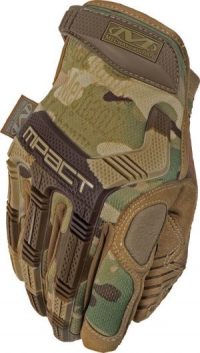
Gloves
A strong pair of gloves that are still thin enough for you to maintain your dexterity are a good addition to any get home bag. The Mechanix Wear – MultiCam M-Pact Tactical Gloves are some of our favorites and they’re about half the price of other tactical gloves.
Money/ID
You probably already have these in your wallet. Money could help you get some food and water if you happen to pass any stores that are still open, and a picture ID will get you through any police checkpoints that may be set up.
Additional Considerations
Packing Your Get Home Bag for 2 Days
You don’t need to deviate too much from the list above if your trip is expected to last two days. Add some more food and you should be good to go.
Packing Your Bag for 3 Days
When you start packing for three or more days of travel, you’re really moving out of get home bag territory and getting into bug out bag territory. I would suggest moving closer to work or working closer to home.
You can still make it home but you’re really asking for trouble by trying to make such a long walk with just a get home bag. Try to find some other form of transportation other than walking. Packing a folding bike in your trunk is an idea that has been tossed around by some people who find themselves in this situation.
Rural Travel
If you’re likely to be traveling through mostly rural areas on your way home then you can shift the focus of your get home bag to deal with the situations that you feel you’ll run into in those areas. Adding more fire-making materials and shelter to your get home bag would probably be advised.
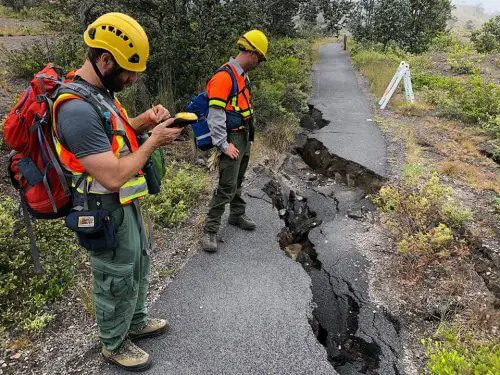
Conclusion
The get home bag is one of the most important survival kits out there. When you’re putting yours together, remember that there is no one size fits all get home bag.
You need to build a get home bag to fit your situation and your environment! It can mean the difference between making it back to your family after a disaster and being trapped at work with no way to make it home!

